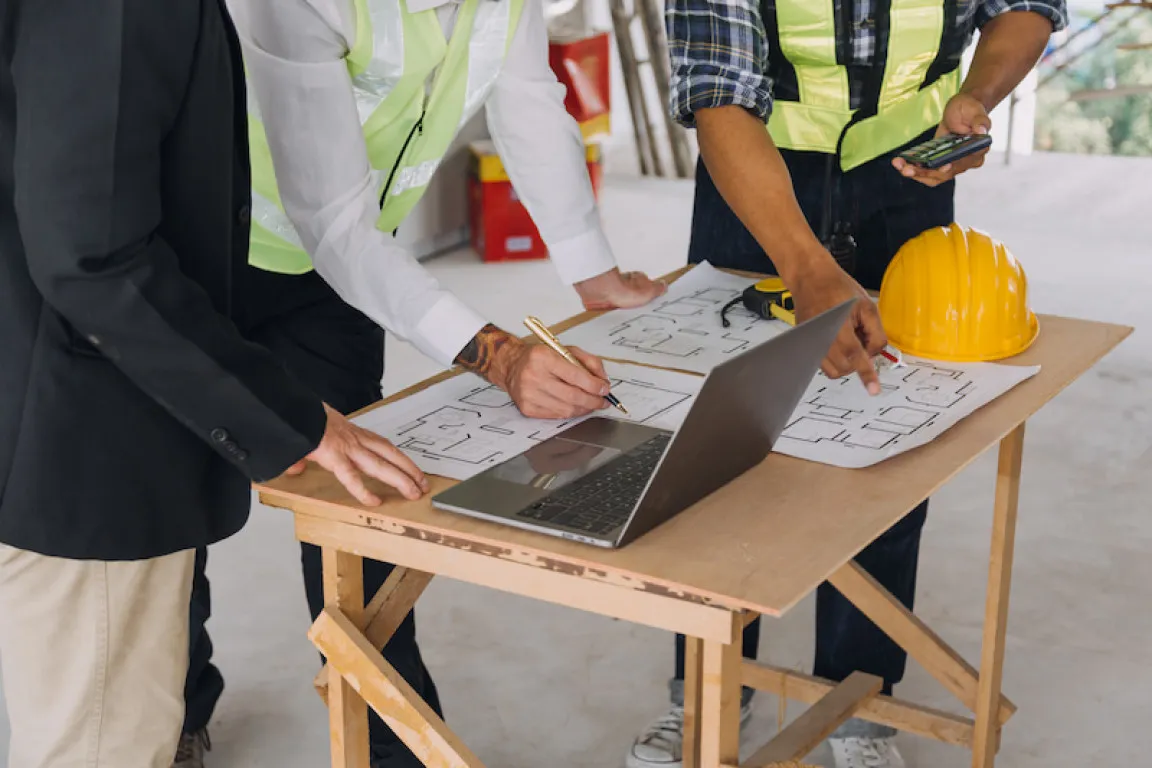Construction engineering is the method used in building, particularly in the field of infrastructure, such as houses, buildings, bridges, and public facilities.
In construction engineering, the application of the latest technology and methods is essential to ensure maximal results that meet user needs.
With the continuous development of construction technology, the quality of buildings has improved, efficiency, and eco-friendliness.
Then, what is construction engineering and why is it needed? Check out the answer in the following article.
What Is Construction Engineering?
Construction engineering is the study of how to design, build, and maintain buildings or infrastructure to be useful for humans.
The construction process often involves small renovations, such as adding a room or repairing a bathroom, and is usually managed by the house owner.
It is important for you to carefully plan construction projects to avoid problems, such as building collapse or inflated costs.
One crucial aspect of construction is selecting the proper foundation. This is because a strong foundation is required to support the building.
So, the type of foundation used depends on the type of soil and the building. For instance, a pile foundation is used for large buildings or unstable ground, while a house can use a slab foundation.
Functions of Construction Engineering
Construction engineering is crucial to support the development of infrastructure needed in daily life. Here are the functions of construction techniques that you need to know.
- Facilitating the building construction, such as apartments, houses, and buildings with advanced and more reliable technology.
- Supporting the construction of various facilities for human activities, such as stores, fields, offices, and other buildings.
- Assisting in infrastructure construction for easier communication and transportation, such as railways, bridges, and roadways.
- Facilitating several construction types, such as railways, bridges, and roadways.
- Increasing the value of projects, especially in the implementation of infrastructure construction programs.
Read also: Knowing the Importance of Concrete Treatment
Why Are Construction Engineering Necessary?
There are many reasons why construction engineering is essential, especially in construction and human life.
One of the reasons is that construction engineering can enhance work quality. By using the right techniques, the results will be better, organized, and meet expectations. This is important to ensure that construction projects run successfully and deliver satisfactory results.
Construction engineering also assists in increasing work efficiency, specifically for experienced construction workers. The main purpose is to ensure the project is completed on time and meets the budget plans.
With the advancement of technology, construction workers are familiar with modern tools and devices, making they can quickly understand how to use them. This is great for work efficiency.
Proficiency in using the latest technology helps construction workers to complete various types of projects, including construction engineering and housing.
The use of technology also reduces mistakes and makes the construction process more efficient, so the project will be completed with the best results.
Construction Engineering with Various Methods of Building Construction Techniques
There are some building construction methods you should know, including steel construction to concrete construction. Here is a detailed explanation.
1. Steel Construction
Steel construction is commonly used to construct buildings, bridges, and other tall structures because of its strength, load-bearing capacity, and other flexibility.
Steel is also easy to form for various architectural designs and has a favorable strength-to-weight ratio, making it lighter than concrete. Additionally, the installation process is faster as steel components are often pre-fabricated in factories and assembled on-site.
However, steel construction also has weaknesses, such as being prone to corrosion if not well-protected, more expensive, and more noisy.
In addition, steel can expand and contract due to its temperature changes and the production process demands considerable natural resources.
2. Precast Construction
Precast construction is a method where building elements, such as wall panels, beams, and columns are produced in a factory or other facility.
Those elements are then distributed to the construction site and assembled into a complete structure. This approach is different from conventional construction, which is directly in the location of the project.
The advantage of precast construction is a more controlled production process, resulting in more consistent quality and reduced mistakes.
Project timelines can also be shorter because elements are produced previously. Additionally, precast construction reduces disruptions at the site and is more efficient in material usage, supporting sustainable construction.
However, precast construction has limitations, such as logistical challenges in delivering precast elements and high initial costs in production facilities.
Additionally, some difficulties in complex design and changes after production. Thorough planning is also crucial to prevent problems during execution.
3. Foundation Techniques
Foundation techniques are vital elements that support building construction, support the weight of the structure, and transfer it to the stronger soil.
This foundation is located at the bottom of the building and ensure the building is stable and safe. There are several types of foundation techniques, including shallow foundations, pile foundations, and column-beam foundations.
Each type has advantages and disadvantages depending on its type of building and the soil conditions at the site.
Shallow foundations are ideal for lightweight buildings, such as residential homes, because they are more affordable and quicker, though they cannot support large or heavy buildings.
Pile foundations are stronger and suitable for unstable soil, although they are more expensive and take a longer time.
Column-beam foundations are commonly used for tall buildings because they can distribute the load evenly, however, it requires thorough planning and higher cost.
Each type of foundation has advantages and disadvantages that you have to consider carefully to ensure the building is safe and stable.
Read also: 3 Recycled Material Applications for Construction
4. Sustainable Construction
Sustainable construction is a construction approach that focuses on resource efficiency, waste reduction, and energy conservation.
The purpose is to minimize environmental impact and create healthier buildings with eco-friendly technology, such as natural lighting and solar panels.
5. Concrete Masonry Construction
Concrete masonry construction involves using a mixture of cement, water, fine and coarse aggregates to create strong building structures.
Concrete is poured into molds to form elements such as slabs, beams, columns, walls, and foundations. The quality of concrete masonry depends on the water-cement ratio, density, and texture, ensuring the structure’s strength and durability under loads and environmental conditions.
This technique is used to create sturdy and stable buildings by considering technical parameters that affect the durability of concrete.
Proper maintenance of concrete construction, such as maintaining moisture and preventing extreme temperatures is crucial to ensure the quality. With proper care, concrete can achieve optimal strength and durability over the long term.
That is the explanation of construction engineering, from the definition to the methods. Construction techniques will develop alongside advancements in science and technology.
This enables the construction of buildings that are increasingly efficient, safe, and eco-friendly.
Additionally, the selection of building materials is crucial to achieve maximal results. Cement is one of the materials you should consider.
Choosing high-quality cement impacts the strength and longevity of a building, such as the benefits offered by Semen Merah Putih Watershield.
Semen Merah Putih Watershield presents water-repellent technology that provides double protection to concrete structures.
This technology shields concrete from water infiltration from the ground, outside the building, or inside the building. By using this cement, your building will be stronger, more long-lasting, and easier to maintain.
For a strong and long-lasting building, choose Semen Merah Putih Watershield. If you are planning on construction, this cement is the right choice to create a satisfactory result.
Contact us for more information and ensure your building construction project uses the best quality materials with Semen Merah Putih Watershield.
Read also: The Right Concrete Mix Ratio According to SNI Standards



